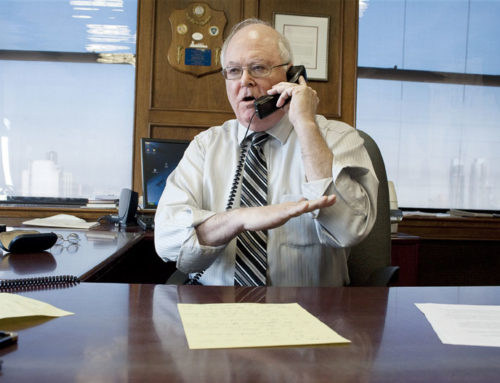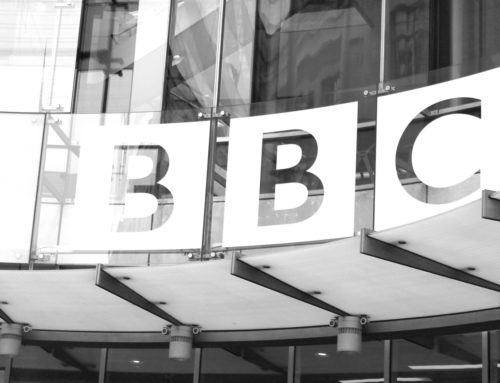Bill Donohue
In September, Bill Donohue wrote a four-part series that was featured on Newsmax.com. The series focused on the war on religion that has been waged by the administration of President Barack Obama. The series caught the attention of many in the media and is sure to be a topic of discussion in many quarters.
Obama’s Secular Mindset
The American people have been exceedingly fair in drawing a distinction between the personal religious beliefs and practices of presidential candidates and the public policies they adopt. This does not mean that personal predilections are without policy implications. To be sure, there are occasions when key personal anecdotes reveal something important about the mindset of candidates. Take, for example, what Michelle and Barack Obama told People magazine in 2008 about the “Obama House Rules.”
Of the seven “House Rules” they enumerated, most were conventional, but one stood out: Michelle and Barack do not believe in giving Christmas gifts to their children. Barack explained that he wants “to teach some limits.” The goal is noble. But of all the other choices available to them—setting spending limits, putting a limit on TV time—for some reason they chose the Christmas holiday as their teaching moment. This is more than unusual: non-Christians, as well as agnostics and atheists, are known to exchange Christmas gifts.
Against this backdrop, we can make sense of the controversy that erupted during the Obamas’ first Christmas at the White House. At issue was whether they should break tradition and nix the display of a manger scene.
The flap started when the New York Times reported that the Obamas were planning a “non-religious Christmas.” The leak came from a former White House social secretary who attended a luncheon for the new appointee, Desirée Rogers: allegedly, the Obamas were not going to permit the display of a nativity scene. When Times reporter Sheryl Gay Stolberg contacted the White House to see if this was true, the story was confirmed. Stolberg was told “there [have] been internal discussions about making Christmas more inclusive and whether to display the crèche.” In the end, the Obamas decided to allow a manger scene. However, Christmas did not escape without controversy. For reasons never explained, the White House Christmas tree was adorned with ornaments depicting drag queens and mass murderers (Mao Zedong was featured; he killed 77 million of his own people).
In 2008, when Obama was a presidential candidate, he made a comment about white working-class Christians that would come back to haunt him. “It’s not surprising,” he said, “[that] they get bitter, they cling to guns or religion or antipathy to people who aren’t like them or anti-immigrant sentiment or anti-trade sentiment as a way to explain their frustrations.” What proved to be so revealing about this admission was the venue: in a closed-door session, he addressed a forum of wealthy, left-leaning secularists in San Francisco.
Given his mindset, it is not surprising that Obama is opposed to the posting of the Ten Commandments on public property. More surprising are his reservations regarding the display of religious symbols on private property. He was only in office a few months when his advance team told officials at Georgetown University that they had better put a drape over any religious symbols that might appear as a backdrop to where the president was going to speak. To drive the point home, they made sure that the IHS symbol, a monogram of the name Jesus Christ, was not in sight.
On September 15, 2009, Obama addressed the Congressional Hispanic Caucus Institute’s 33rd Annual Awards. It was to be a perfunctory speech, although it didn’t turn out that way. To wit: Obama did not reference God, or the “Creator,” when citing the Declaration of Independence. Here is what he said: “We hold these truths to be self-evident, that all men are created equal, endowed with certain inalienable rights….” This is not what Jefferson wrote. He was explicit about the origin of our rights, noting that all men were “endowed by their Creator” with certain unalienable rights. What Obama said was no accident; the remarks were prepared. Moreover, even after being roundly criticized for this startling omission, Obama did the exact same thing only a month later at a fundraiser in Rockville, Maryland.
The fact is Obama is uncomfortable with America’s Christian heritage. In 2010 he could not bring himself to utter the words “In God We Trust” when speaking in Indonesia about our national motto; instead, he substituted “E Pluribus Unum.” But he is quite comfortable with atheists. In 2010, Obama became the first president in U.S. history to welcome a gathering of atheists: administration officials met with activists from the Secular Coalition for America, an umbrella group that includes American Atheists and other virulently anti-Christian organizations.
Obama is not equally jittery about all religions. When it comes to Islam, he can be very accommodating. For example, in 2010 he said he supported the right of Muslims to build a mosque at Ground Zero. The real issue, of course, was not a legal one—it was a moral one. He refused to discuss this matter.
It is not simply Obama who is uncomfortable with religion; it is true of the most active members of his party. Consider what just happened at the Democratic National Convention. On the first day, there was a panel discussion led by a notorious foe of the religious rights of Catholics, namely, Catholics for Choice (CFC). This group, which is nothing more than a well-funded letterhead sponsored by the likes of the Ford Foundation—it has no members—has twice been condemned by the bishops’ conference as a fraud. Perversely, CFC addressed the subject of religious liberty! This would be like having the Klan speak about race relations at the RNC.
Until 2012, every Democratic Party Platform made some reference to God. But things changed this year, demonstrating once again that the administration has a “God problem.” In 2008, the Platform mentioned that government “gives everyone willing to work hard the chance to make the most of their God-given potential.” The italics, which I added, were deleted from the 2012 Platform. Worse, when CNN’s Piers Morgan asked DNC chair Rep. Debbie Wasserman Schultz why someone “deliberately” excised the word “God,” she replied, “I can assure you that no one has deliberately taken God out of the Platform.” After listening to this remarkable response, Morgan pressed her again, asking, “So it was an accident?” She refused to comment.
Once the pushback began, the Obama team folded and reinstated God. But even this process turned out to be a disaster. After ignoring the expressed will of the delegates—a voice vote to put God back in the Platform was split (it didn’t come close to the two-thirds majority that was needed)—it was ruled, by fiat, to have passed. Terri Holland, a New Mexico delegate, made a very revealing remark when she said that the revisions were made to “kow-tow to the religious right.” In other words, thoughtful Democrats would never want to pay homage to God in their Platform.
Obama’s Secular Allies
To learn more about Obama’s approach to religion, consider his base of religious friends. He sat for 20 years listening to Rev. Jeremiah “God-Damn-America” Wright. A black liberation theologian, Wright is known for his racially inflammatory sermons; for example, he has accused Zionism of containing an element of “white racism.” He is so extreme that he even blamed the 9/11 attacks on American foreign policy.
Another clergyman Obama greatly admires is Rev. J. Alfred Smith Sr., an Oakland, California pastor who was honored in 1975 by the violent Black Panther Party; in 1990, he was given an award by the anti-Semitic Nation of Islam. In Catholic circles, Obama’s favorite priest is Father Michael Pfleger, a race-baiting preacher from Chicago who has welcomed Nation of Islam minister Louis Farrakhan to speak in his church.
It was in Obama’s first job where he cultivated his ties to the Catholic community. To be exact, he laid anchor with Catholic activists, not with Catholics in the pew. In 1985, he took a job with a Saul Alinsky-trained community organizer; from then on his network with Catholic left-wing operatives would only expand. What he took from these contacts was not Catholicism; rather, it was how to work with the Catholic left to promote a radical agenda.
Those same associations paid a hefty dividend when it came time for Obama to launch his Catholic National Advisory Council in 2008. Quite frankly, Obama’s Catholic friends are almost all Catholic dissidents, at least on the major social issues. In the last presidential election, there wasn’t one of his 26 Catholic advisors who accepted the Catholic Church’s teachings on abortion, embryonic stem cell research, and school vouchers. That almost all of them agreed 100 percent of the time with NARAL, the radical abortion organization, was hardly surprising.
True to form, the 2012 group, “Catholics for Obama,” is populated with dissidents like Rep. Rosa DeLauro, a staunch abortion-rights advocate who has a history of openly defying the Catholic Church. While this is hardly unusual anymore, it is still mind-boggling to learn that Catholic Democrats PAC is so queasy about orthodox Catholicism that it features a “Catholic League Watch” database online. What scares them about the Catholic League remains a mystery.
Obama’s network of Catholic dissidents came into play when he selected Kathleen Sebelius as his Secretary of Health and Human Services. Her long-time involvement in the pro-abortion movement calls into serious question her status as a Catholic: Catholics can excommunicate themselves when they persistently and deliberately foster policies that are considered “intrinsically evil” by the Catholic Church; abortion is certainly one of those evils.
Sebelius was not simply a friend of George Tiller, the physician who specialized in killing babies who were 80 percent born—she raised money for him. So off-the-charts is Sebelius in her passion for abortion rights that she admits to never backing a single abortion-restricting law. For these reasons, Archbishop Joseph Naumann of Kansas City, Kansas once advised her not to present herself for Holy Communion.
There are several other persons chosen by Obama who have had their problems with Catholicism. Harry Knox, a gay activist with the Human Rights Campaign, was appointed to serve on the Advisory Council for Faith-Based and Neighborhood Partnerships. While Knox was denied ordination in the United Methodist Church and the United Church of Christ because he is a sexually active homosexual, it was his vile comments about the pope that garnered the most publicity at the time of his appointment.
For Knox, the pope is a liar who needs to “start telling the truth about condom use.” He even held the Holy Father accountable for “endangering people’s lives,” never explaining how someone who preaches abstinence could be held responsible for sexual recklessness. No matter, Knox also accused those who belong to the Knights of Columbus of being “foot soldiers of a discredited army of oppression.”
Another gay activist who hates Catholicism is Kevin Jennings. A former drug user and irresponsible teen counselor, Jennings was chosen to be the Safe Schools Czar. He is also a Christian basher who belongs to an urban anti-Catholic group, ACT UP. In 1989, activists from ACT UP stormed St. Patrick’s Cathedral during Mass; they chained themselves to the pews and spat the Eucharist on the floor. Predictably, Jennings is fond of lecturing Catholics about the Church’s teachings on sexuality, and for railing against the “hard core bigots” who comprise the “religious right.”
It was also the appointment of Chai Feldblum to join the Equal Employment Opportunity Commission that made Christians wince. The Georgetown law professor was on record saying that in conflicts between religious liberty and sexual rights, the latter should triumph. Never mind that religious liberty is a First Amendment right and that sexual rights are nowhere mentioned in the Constitution—Feldblum was adamant in her conviction that religious freedom should bow to sexual rights.
Feldblum is actually more extreme than this: she signed a statement in 2006, “Beyond Same-Sex Marriage,” that is the most astounding assault on marriage ever written. Every conceivable “partnership” and “relationship” was deemed worthy of governmental and private recognition. This means that both the public and the private sector must grant rights to “queer couples who decide to jointly create and raise a child with another queer person or couple, in two households.” Churches, obviously, would be expected to comply as they are part of the private sector.
It was not good enough for Obama to hire persons who reject Christian tenets or who speak coarsely about Christianity: he sought to hire activists who want to punish the Catholic Church. His choice of Dawn Johnsen to be assistant attorney general in charge of the Office of Legal Counsel proves this charge. Though she eventually withdrew her name from consideration—a contentious fight lasting more than a year precipitated her withdrawal—the former ACLU and NARAL lawyer should never have been nominated in the first place. In the late 1980s, she cut her legal teeth by working on an ACLU lawsuit that sought to strip the Catholic Church of its tax-exempt status. We can only guess what she might have been up to had she gotten the job.
Obama’s allies in the gay rights community led him to oppose the “Don’t ask, Don’t tell” policy on homosexuals in the military even before it was repealed. Even more revealing, his steadfast refusal to enforce the Defense of Marriage Act shows how his commitment to the gay rights agenda trumps his duties as the nation’s chief executive. It also explains his support for gay marriage. In the 1990s, while running for the Illinois state senate, he said, “I favor legalizing same-sex marriage, and would fight efforts to prohibit such marriages.” However, when he ran for the U.S. senate in 2004, he backed away from this position, and did so again when running for president in 2008. This was pure posturing: in 2008, he opposed Proposition 8 in California affirming marriage between a man and a woman showing his true colors. In 2012, he reverted back to his original support for the right of two men to marry.
Obama’s Secular Policies
President George W. Bush was the first president to initiate faith-based social service programs; he wanted to put an end to the exclusionary policy of funding only public social service entities. There is a mountain of social science evidence showing the yeoman results of faith-based programs: homes for juvenile delinquents; drug rehabilitation centers; counseling services; foster care arrangements; prison ministries. The list is endless. On the one hand, Obama knew these faith-based programs were popular, so he felt obliged to keep them; on the other hand, his secular leanings pulled him the other way.
Early on Obama announced that these programs were not any better than their public counterparts (the data said otherwise), raising serious questions why they should be funded. “I’m not saying that faith-based groups are an alternative to government or secular nonprofits,” he said, “and I’m not saying that they’re somehow better at lifting people up.” Worse, he toyed with the idea of gutting the faith component from the faith-based initiative.
To be specific, an open debate ensued questioning whether people who run faith-based programs should be allowed to hire those of their own religion. Similarly, should those who run foster care programs be permitted to place children with parents of their own religion? The idea that Orthodox Jewish foster care homes should insist that they care for children of their own religion is hardly unreasonable. But to many in the Obama administration, the proposition was at least rebuttable, if not simply wrong.
If the Obama administration were serious about faith-based programs, it wouldn’t ask their opponents for advice on how to run them. This is exactly what it did. It sought the input of Barry Lynn, president of Americans United for Separation of Church and State: he was invited to address the first faith-based council. Ever since, this initiative has floundered, as even those who have served on the council have acknowledged. What happened is not in dispute: endless conversations on the proper role of religion in such initiatives yielded no consensus. More important, Obama’s heart was never in it.
The most decisive evidence that the Obama administration sees no fundamental difference between religious institutions, and those that are purely secular, came during oral arguments before the U.S. Supreme Court in the Hosanna-Tabor case. At issue was the right of a Lutheran school to fire a teacher found unsuitable by its standards.
Traditionally, the government has respected what is called a “ministerial exception,” the idea that religious institutions enjoy constitutional insulation from government oversight when making employment decisions. But for the attorney representing the Obama administration, Leondra R. Kruger, no such insulation was ever warranted: she actually maintained there was no real difference between religious associations and voluntary associations of a secular nature.
Justice Antonin Scalia was astonished by Kruger’s reasoning. “That’s extraordinary. That’s extraordinary. We are talking here about the Free Exercise Clause and about the Establishment Clause, and you say they have no special application?” Justice Elena Kagan, an Obama appointee, was similarly struck by Kruger’s argument. “I too find that amazing, that you think that the Free—neither the Free Exercise Clause nor the Establishment Clause—has anything to say about a church’s relationship with its own employees.”
Kruger’s extremist position in the fall of 2011 resulted in a 9-0 victory for the First Amendment in the spring of 2012; the “ministerial exception” rule was sustained. While this was impressive, it yielded even more fruit: it revealed the way the Obama administration thinks about religious liberty. Had the administration won, the federal government would have been able to steer the employment decisions of every religious entity, effectively neutering their right to craft internal strictures that reflect their doctrinal prerogatives. In short, had the president’s views prevailed, religious liberty as we know it would no longer exist.
If there is one issue that has been at the heart of the culture war over the past several decades, it is abortion. The nation is split on this issue, though the vector of change is certainly moving in a pro-life direction: more Americans consider themselves pro-life than ever before, and there is scant support for abortion-on-demand through term. Without doubt, President Obama is the most radical president we’ve ever had on this subject. His enthusiasm for abortion rights—he has never found an abortion he could not justify—is so unyielding that he even supports selective infanticide.
When Obama was in the Illinois state senate he fought the “Born-Alive Infants Protection Act” on three occasions. The bill would have required doctors to attend to infants born alive after a botched abortion. Obama saw this as a threat to abortion rights, and so he found an exception to his embrace of universal healthcare: this was one human being who was not entitled to care—he could legally be left to die.
Now it is possible to take an abortion-rights position that at least respects the right of religious institutions not to cooperate in what the Catholic Church calls an “intrinsic evil.” But Obama has shown no such respect. Indeed, his war on religion extends to the days when candidate Obama made a pledge to Planned Parenthood in 2007. He told his fans that “the first thing I’d do as president is sign the Freedom of Choice Act (FOCA).”
FOCA is the most radical piece of abortion-rights legislation ever written: it would overturn virtually every law restricting abortion in the nation. Worse, it might very well force Catholic hospitals to perform abortions. If they refused, federal funds would be cut off, effectively putting them out of business. This is Obama’s vision of healthcare and religious liberty. Fortunately, the bill never made it to his desk; Catholics and Evangelicals fought hard to block it.
As an interesting side note, when he was in the U.S. senate, Obama supported government intervention in the case of Terri Schiavo; he voted to provide the physically disabled woman with nutrition. But his pro-life epiphany didn’t last long: in 2008, when asked which senatorial vote he regretted the most, he cited this one.
In the same year, Obama was asked when life begins (Senator John McCain answered “at conception”). Obama’s answer was classic. “Whether you’re looking at it from a theological perspective or a scientific perspective,” he allowed, “answering that question with specificity is above my pay grade.” It was a dishonest dodge.
Once in power, Obama moved quickly to enshrine the abortion agenda. Three days after becoming president, Obama reversed President George W. Bush’s ban on federal funding for international groups that promote or perform abortions; only 35 percent of Americans agreed with him on this issue. The ban, called the Mexico City Policy, was just the first of many abortion-restrictive laws that would be targeted for repeal. For instance, Obama officials attempted to repeal the Hyde Amendment that bans federally funded abortions in public health insurance options. They had more success in effectively gutting the Dornan Amendment, i.e., the ban on tax-funded abortions in the District of Columbia.
When coupled with Obama’s opposition to school vouchers, including a successful scholarship voucher program for the residents of D.C., this effectively meant that if a poor inner-city pregnant woman, typically an African American, wanted to end her pregnancy, the government would pay for it. But if she insisted on taking her baby to term, hoping to later place her child in a private school, the same government wouldn’t give her a dime. The prospects for the women are stark, but for the child they are worse: either the baby’s life will be cut short, or his life chances will be.
Sterilization is another option that is attractive to the Obama administration. In 2009, Obama appointed John Holdren his “science czar.” He is a proponent of forced abortions and compulsory sterilization. In 1977, Holdren co-authored an article with radical environmentalists Paul and Anne Ehrlich whereby they entertained the notion of “adding a sterilant to drinking water or staple foods.” Keeping an open mind about draconian methods, they also argued that while compulsory control of family size is “an unpalatable idea,” the alternatives “may be much more horrifying.” They were most excited about implementing their population-reduction ideas in poor, non-white nations.
The idea that abortion and sterilization are a positive good is so appealing to the Obama administration that it has sought to punish those who don’t subscribe to its agenda. For example, Catholic programs to combat the human trafficking of women and children have long received federal funds. But because these initiatives do not provide for abortion, they were denied a grant by Obama officials. It didn’t matter a whit that the Catholic proposal garnered high marks from an independent review board, or that it actually scored higher than some that were awarded a grant. What mattered is that Catholics don’t view abortion as a way of helping women and children living in a state of near slavery.
Obama’s Assault on Catholicism
Americans who oppose abortion have learned to live with Roe v. Wade, but they (as well as some abortion-rights advocates) have never come to terms with proposals forcing them to fund abortion. This was on President Obama’s mind when he addressed the graduation class of 2009 at the University of Notre Dame. “Let’s honor the conscience of those who disagree with abortion and draft a sensible conscience clause,” he said. For this he was hailed by the president of Notre Dame, Father John Jenkins. Three years later the priest sued Obama for breaking his vow.
The Notre Dame speech notwithstanding, the Obama administration’s willingness to violate conscience rights in pursuit of ObamaCare was evident from the beginning. In 2009, Senator Orrin Hatch and Senator Mike Enzi sought to include language in the healthcare bill that would prohibit public funding of abortion. It was voted down, much to the applause of the Obama administration. A similar bill by Rep. Eric Cantor went down to defeat. Senator Tom Coburn sponsored an amendment that would provide conscience-rights protections for healthcare workers, and it too was defeated. Rep. Bart Stupak, Rep. Joe Pitts, and Rep. Sam Johnson also tried to bar federal funds for abortion; their efforts met the same fate.
What was most exasperating about this entire matter was the insistence on the part of Obama officials that nothing in the healthcare bill would allow for the public funding of abortion. Then why fight with such ferocity bills designed to make sure this never happens?
By the end of 2009, the real agenda of the Obama administration had become so transparent that even its friends at the New York Times felt obliged to come clean. That November the Times ran a news story showing how Obama had betrayed his promise. Reporter Robert Pear wrote that the president “was not comfortable with abortion restrictions inserted into the House version of major health care legislation, and he prodded Congress to revise them.” The pro-life community, largely faith-based, felt disabused by these shenanigans. But they had no idea how bad matters would soon become.
On January 20, 2012 Health and Human Services (HHS) Secretary Kathleen Sebelius rolled out what would come to be known as the HHS mandate: Catholic institutions would be required to pay for contraception, sterilization and abortion-inducing drugs in their healthcare plans for employees. The inclusion of abortion-inducing drugs was striking. The administration could have settled for contraception, but instead it sought to stick the camel’s nose in the tent. Its real long-term interest was plain: eventually, as broached by FOCA, Catholic hospitals would be required to perform abortions.
On January 31, Press Secretary Jay Carney stunned even Obama supporters when he said, “I don’t believe there are any constitutional rights issues here.” No one was buying it, especially not the bishops.
After Catholics pushed back, a new version was introduced three weeks later. But it was a distinction without a difference: it mandated that the insurance carrier of Catholic non-profits must pay for these services.
This was just a shell game. In reality, many Catholic non-profits are self-insured (for example, the Archdiocese of Washington is self-insured). Then there is the issue of Catholic entities that are not self-insured: why should they have to pay their insurance company for services they deem immoral? Another issue that won’t go away is the right of Catholic business owners not to pay for services that violate their conscience.
It is important to acknowledge that Catholics are not asking for special rights—they are simply asking the Obama administration to respect the status quo. The administration won’t budge, saying the best it will do is exempt Catholic churches. So what about Catholic non-profits?
Without doubt, the most contentious, and frankly diabolical, demand of the Obama administration is the proviso that only Catholic institutions that hire and serve mostly people of their own religion are entitled to an exemption. In practice, this means that Mother Teresa’s worldwide health and social service programs that serve people of all religions, as well as non-believers, would not qualify for a religious exemption.
Obama officials arrived at this conclusion by following the thinking of the ACLU (as I have recounted in two books on the organization, the ACLU has never been a religion-friendly institution). In 2000, ACLU lawyers helped devise legislation in California that took a novel view of what constitutes a religious institution. It argued that a truly religious entity had to employ and serve mostly people of its own faith. By adopting the ACLU rule, the Obama administration essentially sought to punish Catholic universities, hospitals and social service agencies because they do not discriminate against non-Catholics. In other words, if these institutions were to display signs saying, “No Jews Allowed,” they would be just fine.
Catholic bishops, led by Cardinal Timothy Dolan, the president of the United States Conference of Catholic Bishops, have made their objections known loud and clear. So have non-Catholics. Evangelical Protestants, in particular, have joined with their Catholic brothers in registering their outrage. It is apparent to everyone that Obama’s war on religion has reached a new level of opposition.
The determination of Obama officials to push forward led them to attack another First Amendment right: the right to free speech. The archbishop of the military services, Thomas Broglio, joined with his fellow bishops in issuing a pastoral letter criticizing the Obama administration for violating the conscience rights of Catholics. He got into trouble with the Army’s Office of the Chief of Chaplains when he asked military chaplains to read the letter from the pulpit. The Obama team initially ordered the letter censored, but eventually modified its position after a compromise was met.
The U.S. Supreme Court ruled ObamaCare constitutional in June, although it did not rule on the constitutionality of the HHS mandate (it was not promulgated until after the high court agreed to decide the fate of ObamaCare). The November election may make all of this moot if Obama loses, but if he wins, Catholic rights will be tested in the Supreme Court. Meanwhile, new legislative efforts are being made to secure conscience rights.
It is still hard to get the president and his administration to speak truthfully about this issue. In August, President Obama told a crowd at the University of Denver that “We worked with the Catholic hospitals and universities to find a solution that protects both religious liberty and a woman’s health.” Yet as recently as February, Bishop William Lori, who chairs the bishops’ Committee for Religious Liberty, said point blank that “no one from this administration has approached the United States Conference of Catholic Bishops for discussions on this matter of a possible ‘compromise.’” He also made it clear that only after the original HHS mandate was revised did the White House contact Archbishop Dolan.
When pieced together, all of these issues—Obama’s secular mindset, his secular allies, his secular policies, and his assault on Catholicism—show an animus to religious liberty. It is no exaggeration to say that this nation has never witnessed anything like it. The frontal assault on religion, especially on its public role, is unprecedented. Explicit references to our religious heritage have been scrubbed clean from speeches and official pronouncements; the professed enemies of Christianity have been given a free hand shaping public policy; faith-based programs have been allowed to wither; the radical pro-abortion and pro-gay agendas have been set loose to undermine our First Amendment freedoms; and attempts to force people of faith to violate their conscience have reached a dangerous level.
The war on religion carried out by the Obama administration is not the product of someone’s imagination—it is real. Whether it succeeds depends less on them than on us.






